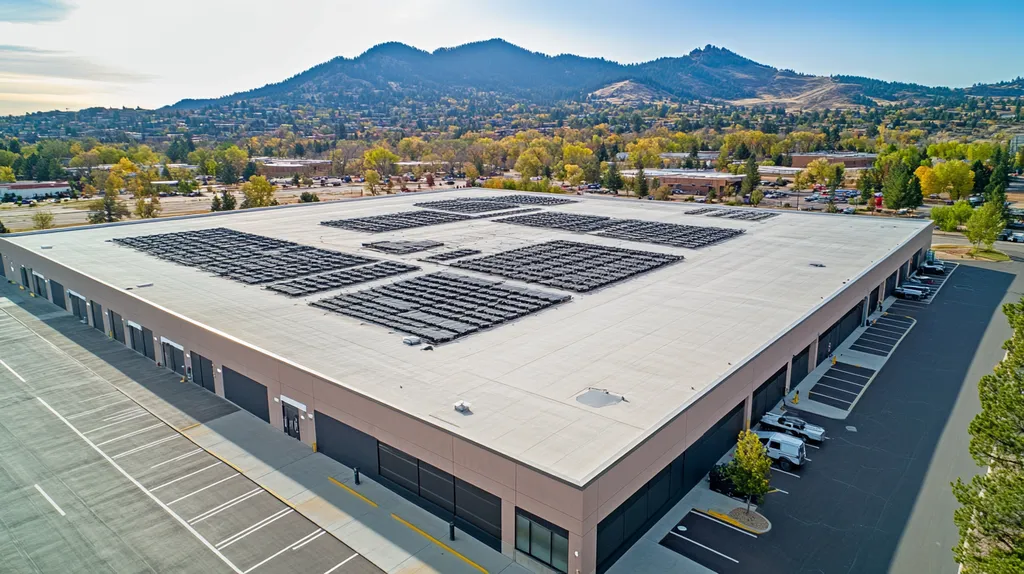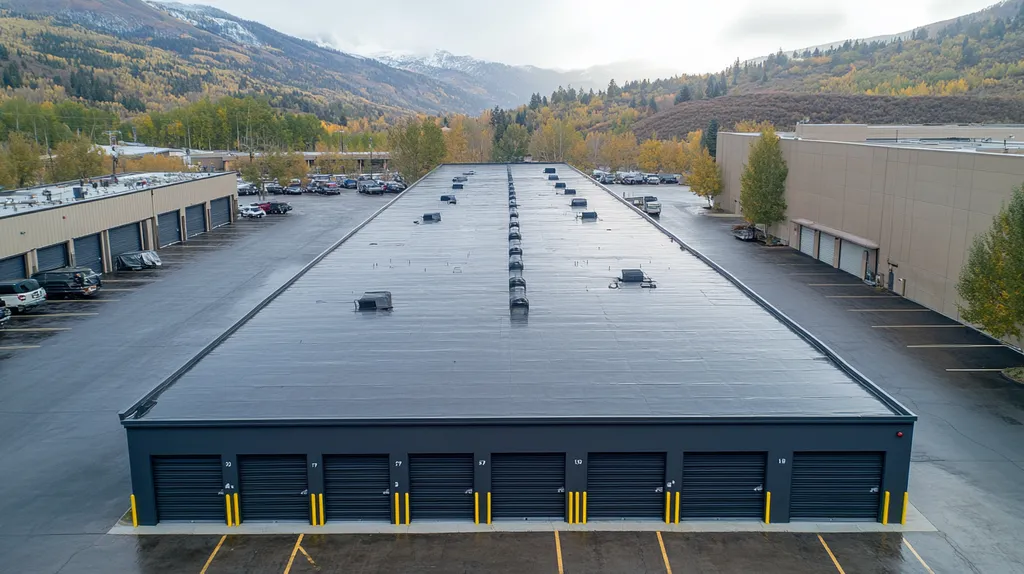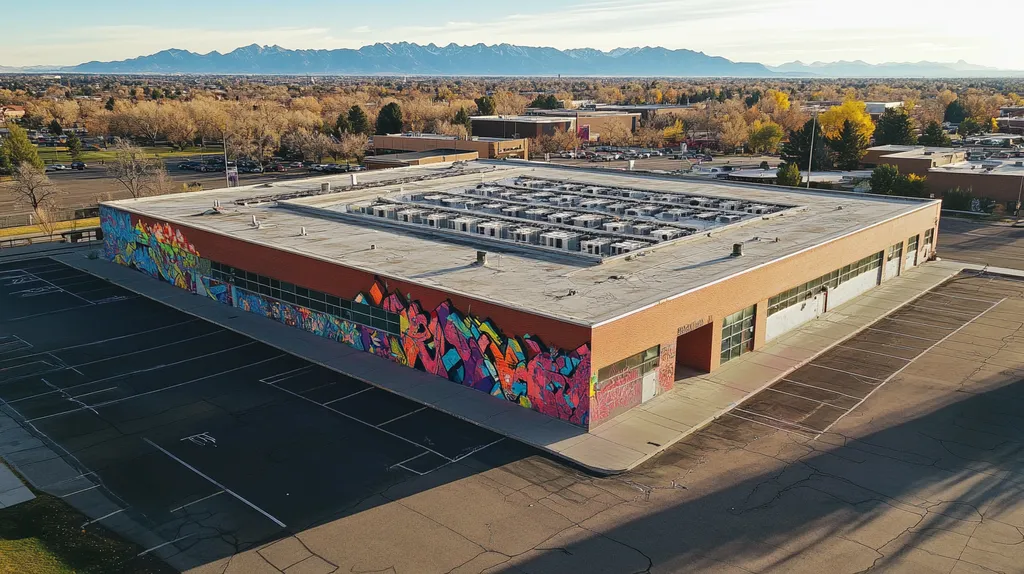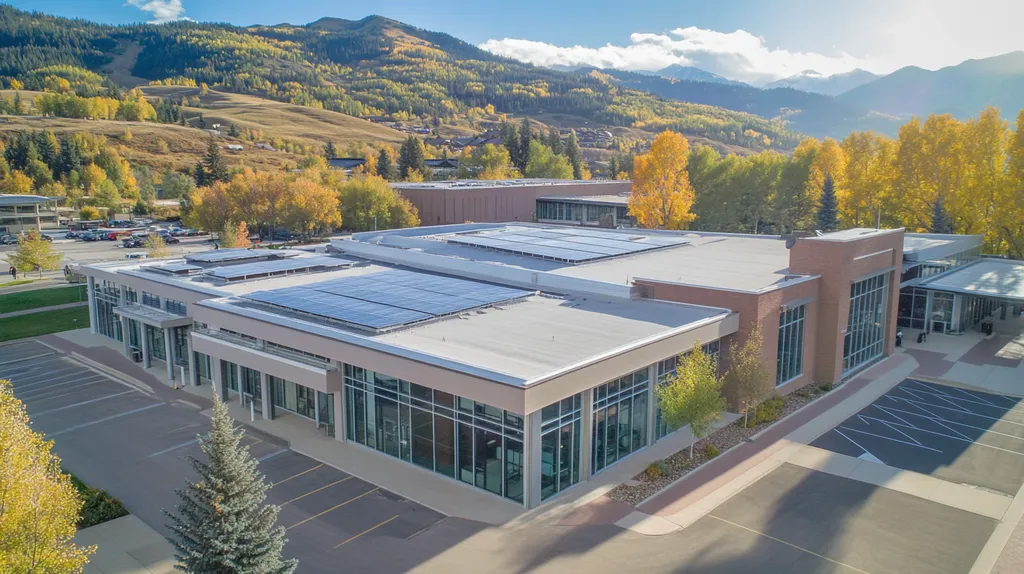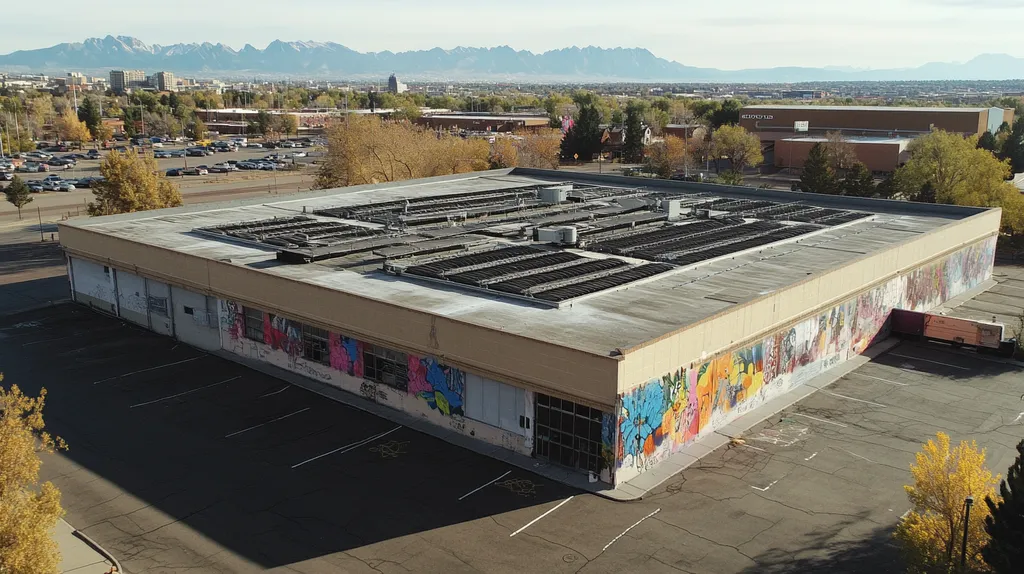Commercial roof coating failures cost building owners over $2 billion annually in unnecessary repairs and premature replacements, with up to 70% of these failures stemming from preventable causes.
From installation quality to environmental conditions, numerous factors influence how long a coating system will effectively protect your investment. Understanding these critical elements can mean the difference between a coating that lasts 20 years and one that fails in less than five.
This analysis separates proven facts from common misconceptions about coating longevity, providing building owners with actionable insights for maximizing their roofing investment.
SECTION 1: COMMON MISCONCEPTIONS
When it comes to commercial roof coatings, misconceptions can cost building owners thousands in premature failures and unnecessary replacements. A single coating failure can lead to extensive water damage, disrupted operations, and significant repair expenses. Understanding the reality behind common myths is essential for making informed decisions that protect both the building and bottom line.
Quality vs. Cost Assumptions
The belief that premium pricing guarantees superior performance leads many building owners to overspend on unnecessarily expensive coatings. This misconception often results in selecting products that don’t align with the building’s specific needs or environmental conditions.
Quality in roof coatings stems from proper material selection and application methods rather than cost alone. A moderately priced coating that matches the substrate requirements often outperforms expensive alternatives that aren’t properly specified.
The true measure of coating quality lies in performance metrics like adhesion strength, elongation properties, and weathering resistance. These characteristics, rather than price, determine how well a coating will protect the roof surface.
Smart coating selection requires analyzing the complete cost-benefit equation, including installation requirements, maintenance needs, and expected service life. This comprehensive approach leads to better long-term outcomes than simply choosing the most expensive option.
Misunderstanding Coating Durability
Many facility managers mistakenly believe that all commercial roof coatings deliver similar durability and protection levels. This oversimplification ignores crucial differences in coating formulations and their specific performance characteristics.
Coating durability varies significantly based on the chemical composition and manufacturing process. Silicone-based coatings, for example, typically offer superior UV resistance compared to acrylic alternatives, while polyurethane coatings excel in impact resistance.
Installation quality dramatically impacts coating performance. Even the highest-quality coating will fail prematurely if applied incorrectly or under improper conditions.
Regular maintenance remains essential regardless of coating type. No coating product can deliver its advertised lifespan without proper inspection and maintenance protocols in place.
Overlooking Environmental Factors
Environmental conditions represent one of the most underestimated factors affecting coating performance. Pollution, industrial emissions, and proximity to saltwater can dramatically accelerate coating degradation and reduce system longevity.
Local climate patterns create unique challenges that demand specific coating properties. UV exposure, temperature fluctuations, and precipitation levels all influence how quickly a coating will deteriorate.
Wildlife activity and vegetation growth can compromise coating integrity through physical damage and moisture retention. These biological factors require consideration when selecting and maintaining roof coatings.
Understanding and accounting for these environmental impacts is crucial for proper coating selection and maintenance planning. (source: RGB Construction Services)
SECTION 2: PRACTICAL IMPLICATIONS
The difference between a roof coating that lasts 20 years and one that fails in 5 often comes down to practical decisions made during specification and installation. Studies show that up to 90% of premature coating failures stem from preventable issues in application, maintenance, or material selection. For facility managers and building owners, understanding these practical implications can mean the difference between a successful long-term investment and a costly replacement cycle.
Installation Impact on Lifespan
Surface preparation stands as the cornerstone of coating performance. Even minor oversights during this phase can create weak points where moisture penetration and adhesion failure begin.
Temperature and humidity control during application directly affect how well coatings cure and bond. Applications outside manufacturer-specified conditions often result in blistering, cracking, or delamination within the first few years.
Proper mil thickness measurements during application ensure uniform coverage. Variations in coating thickness create stress points that can lead to premature aging and failure.
Quality control documentation during installation provides critical baseline data for future maintenance. Without these records, identifying and addressing emerging issues becomes significantly more challenging.
Weather Resistance and Maintenance
Different coating types offer varying levels of weather resistance based on their chemical composition. Silicone-based coatings typically provide superior UV protection and ponding water resistance compared to traditional materials.
Regular inspections should focus on high-stress areas where water tends to pool or mechanical equipment creates wear patterns. These zones often show the first signs of coating degradation.
Seasonal maintenance requirements vary based on local climate conditions. Winter preparations in northern regions must address freeze-thaw cycles, while southern locations need strategies for extreme heat and UV exposure.
Documenting weather-related coating performance helps optimize future maintenance schedules. This data proves invaluable when planning coating replacement or renewal projects.
Coating Thickness and Performance
Different roof coating materials offer varying levels of durability and protection depending on their formulation and thickness. The quality of the coating material significantly influences its ability to withstand environmental stresses and maintain its protective properties over time.
Proper thickness specifications must account for substrate conditions and expected wear patterns. Areas with higher foot traffic or mechanical stress often require additional coating layers.
Modern high-performance coatings can deliver superior protection even at lower thickness levels when properly specified and applied. This advantage stems from advanced polymer technology and improved application methods.
Regular thickness measurements during routine inspections help track coating wear rates and plan for maintenance. This proactive approach helps prevent sudden failures and extends overall system life. (source: News Channel Nebraska)
SECTION 3: COST OF MISINFORMATION
Misinformation about commercial roof coatings costs building owners millions annually in avoidable expenses. Studies indicate that up to 40% of premature coating failures stem directly from decisions based on incorrect assumptions about product performance and maintenance requirements. For a typical 50,000-square-foot commercial roof, these mistakes can translate into hundreds of thousands in unnecessary replacement costs.
Financial Impacts of Premature Replacement
When building owners replace functionally sound roof coatings too early, they incur massive unnecessary capital expenses. A typical commercial roof replacement costs between $8-15 per square foot – expenses that could often be delayed through proper coating maintenance and timely recoating.
The ripple effects extend far beyond direct replacement costs. Business disruption during unnecessary replacements can cost thousands in lost productivity and tenant satisfaction, while also risking potential water damage to inventory and equipment.
Insurance premiums often increase following premature replacements, as carriers view frequent roof work as a risk indicator. These rate hikes can persist for years, creating ongoing financial burden.
The opportunity costs of tying up capital in unnecessary replacements prevent investment in other critical facility improvements that could enhance building value or reduce operating expenses.
Losses from Unnecessary Repairs
Misdiagnosed coating issues frequently lead to excessive repair costs that could be avoided through proper assessment. Many building owners waste thousands addressing superficial coating damage while ignoring underlying membrane conditions that actually require attention.
Rushed repairs based on incomplete information often fail to address root causes, leading to recurring problems. This reactive cycle of temporary fixes ultimately costs far more than taking time for proper diagnosis and repair planning.
Poor coordination between coating repairs and other rooftop work creates redundant expenses. Simple maintenance tasks can damage hastily repaired areas, necessitating additional coating work that could have been avoided.
Improper repair specifications waste materials and labor while potentially voiding manufacturer warranties. Understanding correct repair protocols protects both short-term budgets and long-term coating performance.
Opportunity Costs of Suboptimal Coatings
Selecting inappropriate coating systems based on incomplete information creates substantial hidden costs. Asphalt coatings, while cost-effective for moderate weather exposure, typically last only 5-7 years and require consistent maintenance to achieve even that lifespan. (source: SmartSeal)
Using coatings ill-suited for local weather conditions accelerates degradation and reduces protection. This mismatch often necessitates more frequent recoating cycles, dramatically increasing lifetime costs.
Inadequate coating thickness or improper formulations for specific substrates lead to adhesion failures and reduced performance. These issues compound over time, forcing building owners to address both coating and substrate damage.
When coatings fail to deliver expected energy savings due to poor specification, facilities incur ongoing utility cost penalties. These losses accumulate significantly over a building’s lifecycle, often exceeding the initial coating investment.
SECTION 4: REALITY CHECK
Commercial roof coating performance often falls short of expectations, with industry data showing up to 30% of installations failing to reach even half their projected lifespan. This reality gap costs building owners millions in premature replacements and emergency repairs. Understanding actual coating lifespans, deterioration factors, and inspection protocols is essential for protecting your roofing investment and avoiding costly failures.
Actual Lifespan Expectations for Coatings
Different coating types deliver varying performance levels under real-world conditions. Silicone coatings typically last 15-20 years with proper maintenance, while acrylic systems average 7-10 years in moderate climates.
Installation quality dramatically impacts longevity. Proper surface preparation, environmental conditions during application, and correct mil thickness are critical factors that determine whether a coating reaches its full lifespan potential.
Local climate conditions create significant variations in coating durability. High-UV environments may reduce coating life by 20-30%, while industrial pollutants can accelerate degradation even faster.
Maintenance practices play a decisive role in actual coating performance. Regular cleaning, prompt repairs, and protection from mechanical damage can help systems achieve their maximum potential lifespan.
Factors Influencing Deterioration
UV exposure represents one of the most significant threats to coating integrity. Extended sun exposure breaks down chemical bonds in coating materials, leading to chalking, cracking, and loss of protective properties.
Proper installation is crucial for the effectiveness and longevity of roof coatings. Professional installation services prevent common failures like uneven application and improper curing that lead to premature deterioration. (source: News Channel Nebraska)
Physical damage from foot traffic, equipment maintenance, and debris impact creates weak points where coating failure begins. These high-stress areas require additional protection and more frequent inspection.
Chemical exposure from air pollution, acid rain, and industrial emissions can rapidly degrade coating materials. Buildings in urban or industrial areas often experience accelerated coating wear due to these environmental factors.
Importance of Regular Inspections
Systematic inspection protocols catch developing problems before they cause significant damage. Quarterly visual inspections combined with annual detailed assessments provide the oversight needed to maintain coating performance.
Documentation of inspection findings creates a performance history that helps predict maintenance needs and plan for eventual recoating. This data proves invaluable for optimizing maintenance budgets and timing replacements.
Professional evaluations should focus on high-risk areas including penetrations, flashings, and drainage points. These vulnerable zones often show the first signs of coating deterioration.
Advanced inspection technologies like infrared scanning can detect subsurface moisture issues before visible damage appears. Early detection through these tools prevents extensive damage and costly repairs.
SECTION 5: EVIDENCE-BASED ALTERNATIVES
Every year, commercial building owners waste millions on premature roof coating failures that could be prevented through evidence-based practices. Data shows that buildings implementing comprehensive coating strategies see up to 300% longer system lifespans compared to those relying on reactive maintenance. By focusing on material quality, installation expertise, and systematic maintenance, property owners can transform their roofing systems from persistent liabilities into durable, cost-effective assets.
High-Quality Material Selection
Material selection represents the foundation of coating performance, with premium products offering up to five times the service life of economy alternatives. Laboratory testing consistently demonstrates superior weathering resistance and adhesion properties in high-performance coating formulations.
Advanced coating chemistry provides enhanced protection against UV degradation, moisture intrusion, and thermal cycling. These characteristics directly translate to reduced maintenance requirements and longer intervals between recoating.
Modern coating systems incorporate specialized additives that combat specific environmental challenges. From enhanced mold resistance to superior chemical resistance, these targeted formulations deliver measurable performance improvements.
Documentation of material performance characteristics enables informed decision-making based on actual building conditions rather than marketing claims. This data-driven approach helps prevent costly mismatches between coating properties and application requirements.
Professional Installation Practices
Installation quality determines whether a coating system will achieve its full performance potential or fail prematurely. Proper surface preparation, environmental monitoring, and application technique validation are essential for maximizing coating adhesion and durability.
Digital monitoring tools now enable precise control over application conditions including temperature, humidity, and coating thickness. This technology helps eliminate variables that historically contributed to coating failures.
Quality control documentation during installation creates a permanent record of compliance with manufacturer specifications. These records prove invaluable for warranty claims and future maintenance planning.
Roof coatings extend roof life, improve energy efficiency, and protect against leaks and weather damage when properly installed. The coating’s lifespan varies significantly based on the specific product type, local weather patterns, and maintenance protocols. (source: RENCO Roofing)
Strategic Maintenance Schedules
Proactive maintenance protocols dramatically extend coating lifespans by identifying and addressing potential issues before they cause system failure. Regular inspections focused on high-stress areas help prevent localized damage from spreading.
Digital maintenance tracking systems enable precise scheduling of cleaning, repairs, and preventive treatments. This systematic approach ensures no critical maintenance tasks slip through the cracks.
Performance monitoring through periodic testing helps quantify coating degradation rates and optimize maintenance intervals. This data-driven approach prevents both premature replacement and delayed intervention.
Documentation of maintenance activities creates valuable trending data that informs future coating selections and maintenance strategies. These insights help property owners continuously improve their roof management practices.
SECTION 6: TEST AND VERIFY
Proper testing and verification of commercial roof coatings represents the difference between a 20-year performance life and catastrophic early failure. Industry data shows that buildings lacking systematic verification protocols experience coating failures at triple the rate of those with robust testing programs. While many property owners view testing as an unnecessary expense, the cost of overlooking this critical process often results in hundreds of thousands in emergency repairs and premature replacements.
Conducting Regular Roof Inspections
Professional roof inspections should occur quarterly at minimum, with additional assessments after severe weather events. These evaluations must follow a systematic protocol that examines coating adhesion, surface deterioration, and potential moisture infiltration.
Core sampling and adhesion testing provide quantifiable data about coating performance. These objective measurements help facility managers make informed decisions about maintenance timing and recoating requirements.
Infrared moisture scanning and electronic leak detection identify subsurface issues before visible damage appears. Early detection through these advanced inspection methods prevents extensive damage to both coating and substrate.
Detailed documentation of all inspections creates a performance history that guides maintenance planning. This data proves essential for warranty compliance and helps optimize the timing of major coating work.
Using Intelligent Monitoring Systems
Modern coating monitoring systems utilize embedded sensors to track temperature, moisture levels, and membrane stress in real-time. This continuous data stream allows facility managers to identify developing problems before they cause significant damage.
Automated alert systems notify maintenance teams when monitored parameters exceed acceptable ranges. This immediate notification enables rapid response to potential coating failures before they spread.
Integration with building management systems provides comprehensive oversight of roofing performance. This holistic approach helps identify how HVAC operations and other building systems impact coating longevity.
Data analytics derived from monitoring systems help predict coating life expectancy with increasing accuracy. These insights enable proactive maintenance planning and optimize the timing of coating renewal projects.
Verifying Warranty Claims and Performance
Successful warranty claims require systematic documentation of coating condition from installation through maintenance. Regular testing and verification create the evidence trail needed to support warranty coverage.
Performance verification should include both visual assessments and quantifiable measurements. Core samples, adhesion tests, and mil thickness readings provide objective data about coating condition.
Third-party verification helps eliminate bias in coating performance assessment. Independent testing laboratories can provide certified results that carry weight in warranty discussions.
Documentation must align with specific warranty requirements for coverage validation. Understanding and following manufacturer-specified testing protocols protects building owners’ warranty rights throughout the coating lifecycle.
The Bottom Line
With commercial roof coating failures costing property owners over $2 billion annually, understanding and implementing proper coating practices has never been more critical.
Environmental factors, installation quality, and maintenance protocols collectively determine whether a coating will last 5 years or 20 years.
Building owners who invest in proper material selection, professional installation, and systematic maintenance programs typically see coating lifespans extended by 200-300%.
Regular testing and verification, combined with modern monitoring systems, provide the oversight needed to protect these valuable assets.
By separating fact from fiction and implementing evidence-based coating practices, facility managers can transform their roofing systems from ongoing liabilities into durable, cost-effective assets that deliver decades of reliable protection.
FREQUENTLY ASKED QUESTIONS
Q. What are common misconceptions about commercial roof coatings?
A. Many believe all coatings provide similar durability and performance, which is incorrect. Quality varies based on material composition and application methods, not just cost. Understanding the truth can protect your investment.
Q. How does installation affect the lifespan of an industrial roof coating?
A. Proper installation significantly impacts lifespan; mistakes during application can lead to early failures. Quality control in surface preparation and adherence to manufacturer specifications are essential for maximizing coating durability.
Q. What costs arise from misinformation about commercial roofs?
A. Misleading information can lead to unnecessary replacements and costly repairs. Owners often incur high expenses due to premature failures, influencing both operational efficiency and maintenance budgets significantly.
Q. How can building owners ensure coating longevity for commercial roofs?
A. Building owners should focus on proper maintenance protocols and regular inspections. Addressing coating deterioration early and ensuring quality installation methods can help maximize lifespan and performance.
Q. What evidence-based strategies can enhance roof coating lifespan?
A. Choose high-quality materials, ensure professional installation, and establish strategic maintenance schedules. These proactive practices can significantly increase roof coating durability and reduce long-term costs.
Q. Why is testing and verification critical for commercial roof coatings?
A. Regular testing identifies potential failures early and ensures coatings meet performance standards. Skipping this step can lead to costly repairs and failures, negating initial investments in roofing systems.
Q. What role do environmental factors play in the lifespan of industrial roof coatings?
A. Environmental conditions such as UV exposure, pollution, and moisture levels significantly impact coating effectiveness. Understanding these factors helps in selecting the right coating materials suited to local weather and industrial conditions.

